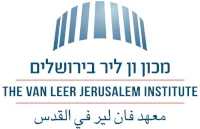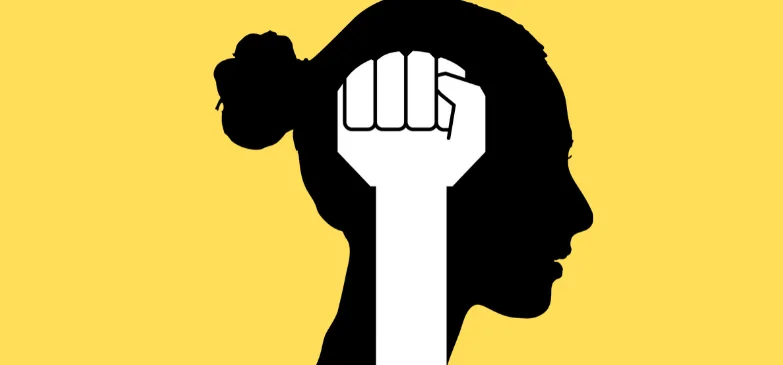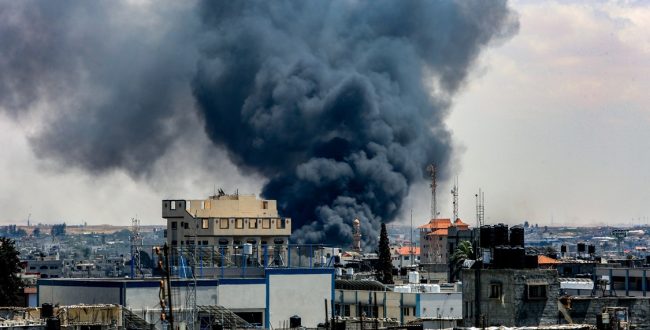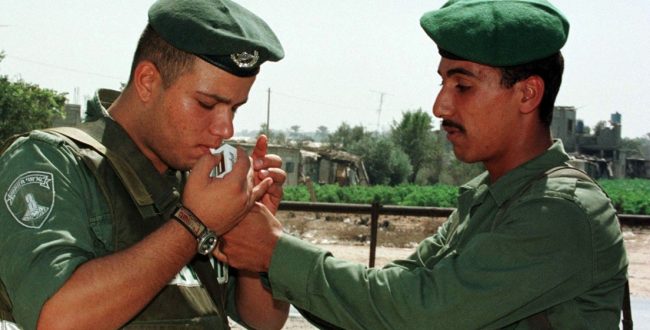A major uproar is taking place in the occupied territories, and particularly Hebron, after a group of tribal leaders from the West Bank published a statement following a gathering in the compound of the a-Tamimi household in Hebron. The Pan-Islamist Hizb-u Tahrir Party was present in large numbers at the gathering, which raised suspicions that it was behind it and cynically exploited the tribal leaders. Senior Hamas officials were also in attendance.
The statement rejected the Palestinian Authority’s decision to join CEDAW, the Convention on the Elimination of all Forms of Discrimination Against Women. The majority among Palestinian society opposes joining the Convention based on religious grounds, and the Convention articles that were criticized in the statement concerned intervention in the work of judges, media outlets and journalists. The statement also called for shuttering feminist institutions in the occupied territories.
The language of the statement indicates that Hizb-u Tahrir indeed played a major role in drafting it, aiming to impose its agenda by utilizing the influence of the tribes, and against the backdrop of partisan rivalry among the different Palestinian parties.
In the past, the tribes stood by the rulers. During the period of Jordanian control over the West Bank, between 1948-1967, Amman granted the mukhtars a prominent role in Palestinian society, including bureaucratic authority, financial assistance and even the authority to solve problems vis-à-vis the authorities. Some of the mukhtars (village and tribal elders) preserved the relationship with Jordan even after the occupation of the West Bank by Israel: they continued engaging with Amman and meet senior Jordanian officials, including King Hussein and later Abdullah II.
After 1967 and before the establishment of the Palestinian Authority, during the period of direct Israeli rule over all of the West Bank and Gaza Strip, Israel tried to manufacture convenient interlocutors among the tribes and force them upon Palestinian society. It granted those individuals certain privileges, such as less restrictions on freedom of movement and granted them construction permits denied to others. However, the initiative of the Village Associations, which started in the area of Hebron, failed. Israel encouraged the emergence of these local association to counterbalance the power of the Palestine Liberation Organization (PLO). The role of the tribe and the mukhtar remained circumscribed to familial and social issues and settling disputes according to tribal traditions, and was disconnected from political or partisan matters.
Since its establishment, the Palestinian Authority strove to formalize the role of the tribes and their leaders and established a directorate of tribal affairs, which was the official body to grant credentials to mukhtars and a sphere of influence for tribal customs in the legal system and police, which recognized tribal dispute resolutions. Thus, the role of the tribes was cemented in popular and official Palestinian consciousness. The late President, Yasser Arafat, used to meet tribal elders and it was clear that the tribes and their leaders stand by the Palestinian Authority and its policies, while distancing themselves from the opposition.
The 2015 “Lone Wolf Intifada” in Jerusalem was a manifestation of the crisis of the armed resistance against Israel, against the backdrop of the political split between Fatah and Hamas, and their mutual attrition. Fatah has been clinging onto power and the Palestinian Authority prevents the ordinary work of Hamas in the Gaza Strip. Priorities have changed. In 2015, for the first time, protests erupted that were organized by tribes, and the processions were led by tribal elder. Certain large families in Hebron demanded that Israel release the bodies of assailants killed by Israel, after Israel instituted a policy to keep the bodies as bargaining chips. Some families bragged about having the largest number of “martyrs” and the number of bodies that Israel is holding and refusing to release to their families. This was an unusual development.
Some of the bodies held by Israel were of teenage girls and women, which instigated Palestinian and tribal public opinion. Israel, for its part, tried to exploit the intervention of the tribes on this matter to create direct communication channels with them, aiming to create a deal of “bodies in exchange for calm,” but the tribal elders flatly rejected the offer, arguing that the negotiations are the sole responsibility of the PLO. However, by insisting on the unconditional release of the bodies, without any political strings attached, the tribes essentially transcended their traditional role and joined the political and national struggle.
The second major milestone pertaining to the changing role of the tribes in Hebron occurred over a year ago, when the Palestinian Authority attempted to implement the Welfare Law. Most employers and businesspeople opposed the law due to its financial implications, and some tribal leaders joined the wealthy, businesspeople and Hizb-u Tahrir, which is dominant in Hebron, to oppose the law. These forces organized gatherings in tribal communal meeting places, to convince the public to oppose the law. Thus, these spaces turned from being places for celebrations and mourning and family matters, to spaces of political activism, similarly to headquarters of parties and organizations.
The tribes exploited the vacuum that emerged as a result of the decline of the Palestinian national movement. Tribes in Hebron participated in protests against the law, and eventually, the President of the Palestinian Authority, Mahmoud Abbas, issued a decree freezing the implementation of the law. This was also an important development with regards to the status of the upper class, who were once allies of the Palestinian leadership and became its opponents, at least when it comes to the matter of welfare.
The Palestinian Authority’s decision to join CEDAW, which deals with the marginalization of women, aroused a firestorm among the Palestinian public, which is taking place alongside an ongoing debate about holding elections in the occupied territories. The Fatah movement expressed its opposition to adopting the CEDAW, and the Palestinian Authority’s weakness is clearly evident. The only ones who stood by the Palestinian Authority were several civil society organizations and the Palestinian Left, which do not enjoy significant support among Palestinians. Hizb-u Tahrir and hundreds of tribal notables stepped in to express their opposition as well. The gathering at the compound of the a-Tamimi family resulted in a controversial statement that aroused angry responses from politicians, legal experts, the general public, and even among the tribes.
The focal point of these developments in Hebron, since it is the largest province in the West Bank, home to about 800,000 people, and owing to its tribal nature. Certain tribes in Hebron exceed the number of residents of entire provinces in the West Bank. It should be mentioned that most tribes elect their councils by democratic elections. Academics, the well-educated, political activists and former security prisoners are members of these councils, which marks the end of the era of the mukhtars. This development allowed for the role of the tribes to seep into the political and national sphere. These developments are occurring in the context of a conservative and religious culture, which is seeing the diminution of the Palestinian national movement. Into the void left by the decline of the national movement, these religious and tribal sentiments and mobilization are becoming increasingly influential.
The public discourse surrounding CEDAW shows that the role of the tribes and their leaders and their connection to politics and political power is becoming stronger. It is also apparent that the political, social and national role of the tribe is rising alongside the decline in the traditional roles of the tribe and the mukhtar. This process may give rise to new mechanisms and structures of power. Fatah itself will need to restore its relations with the tribes after the blow it sustained due to the Welfare Law and the adoption of the CEDAW.
The ongoing public discourse and changes in the Palestinian sphere will likely draw a new partisan map. History shows that the tribe is one of the most important components of the national and social makeup of Palestine, but it is incapable of managing and leading Palestinian political life. The Palestinian national movement will have to rebuild itself in a manner that would allow it to lead society once again, and within it, the tribe.

















